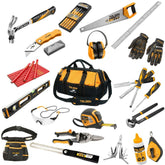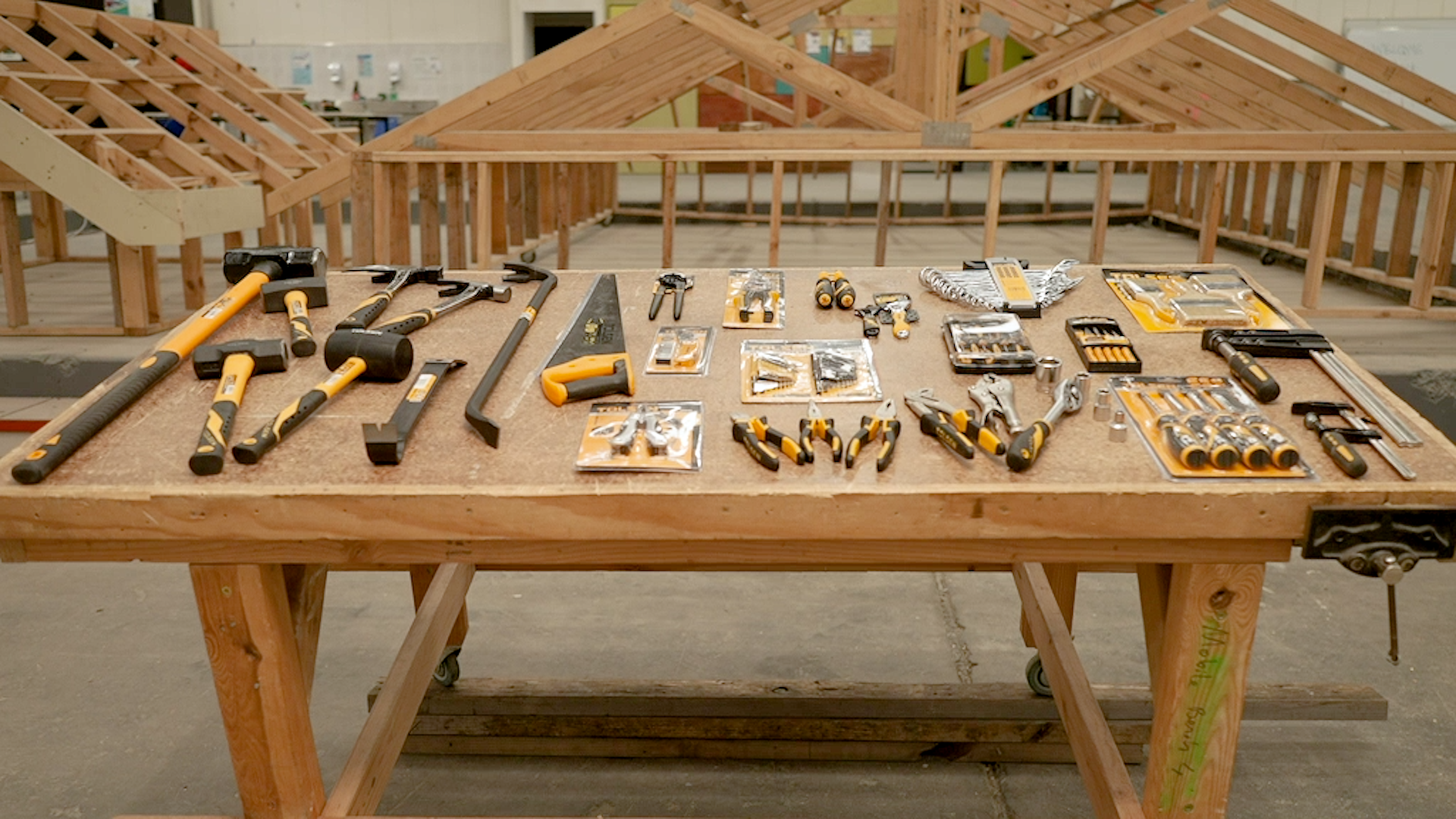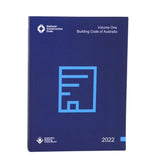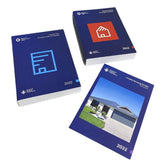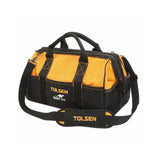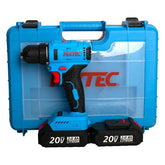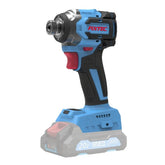Hand Tools and Tool Board
Instrument Board
You need to be able to find tools quickly when you need them. If you hang the appliances on the wall, you can see them all clearly and easily reach them. There are different systems for hanging your tools in DIY stores.
Hint: Hang heavy tools such as hammers at the bottom. Thus, they do not cause much damage if they fall. Always hang dangerous tools such as knives and planers out of the reach of children.
Perforated Panels
Most tool boards are "pegboards" with holes or slots into which you can attach different types of hooks, loops, holders, and storage drawers.
These systems are available in different sizes and you can choose your own layout.

Finding the right place
Choose where you want to hang your tool board. If there is enough space, you can attach a wide board with a fluorescent lamp on the top of the board. So there will always be plenty of light where you work. You can use a wide slat as a shield on the front of the lamp so the light does not catch your eyes. You can use the top of the plank for storage drawers or power tools. You can also attach storage cabinets to the top of the plank. Make sure you can reach them!
Which tools are needed for which job?
You will need a few basic tools for daily work and repairs. Make sure you have these essential tools in your toolbox or tool panel. The list below is a handy guide in case you follow the work instructions that include specific tools.
Hammers
1. You can recognize the carpenter's hammer by its tapered end. This tip allows small nails to be driven into the wood
2. Fork hammer; used for removing nails with curved prongs
3. The hammer has a heavy head that produces a much higher impact than the standard hammer
4. A rubber hammer is used to avoid damaging the material or workpiece
5. A wooden hammer is used to hammer wedges or hit a chisel
6. The staple hammer allows you to hit the centre pins of the hinges out and drive the heads of the nails under the surface of the wood
Pliers
1. Pliers are used to loosening nails or cut wires
2. Adjustable pliers are used to holding water and wastewater pipes securely. Adjustable jaws allow a wide variety of pipe sizes to be held
3. Combination pliers, as the name suggests, are a combination of flat-nose pliers, pliers, and adjustable pliers. Sharp cutting edges can be used to cut fine wires
4. Cable stripping pliers allow you to strip the insulation of electrical wires and cables. These pliers have a set screw for cables of different diameters. After the insulation of the cable is cut, it can be stripped from the cable by pulling
5. Side cutter is widely used to cut (electric) wires and cables
6. Crow nose pliers have thin and pointed jaws, so they are suitable for all kinds of precision assembly work. Toothed jaws allow the user to obtain a firm grip with minimal effort
Keys and Sockets
1. Two blades are used to loosen and tighten nuts and bolts
2. Star spanner is similar to a standard two-end wrench, but grips all 6 faces of a nut or bolt, while a standard double-end wrench only grips 2 faces
3. Turney can be used for different size nuts and bolts in case you don't have the right size wrench
4. Spark plug wrench is used for removing and tightening hard-to-reach parts
5. The socket wrench has 6 or 12 grip points and a square opening at the top for the intermediate handle or ratchet.
6. Hex wrench or Allen key has a right angle handle, has a hex head at one or both ends, and is used to loosen and tighten hex head bolts.
Wood Saws
1. A wood saw is used to cut all kinds of wood and panels. These saws usually have a universal tooth profile
2. The backsaw has a reinforced upper edge. This provides extra stiffness for making straight cuts
3. A jigsaw is a small backsaw with slightly offset teeth, used for quick cuts, for example, in wooden frames or wooden strips. This saw is often used in conjunction with a mitre box (3a)
4. A bristle saw is a fine-toothed saw that is attached to a U-shaped frame with wing nuts. When using this type of saw you need to keep the frame vertical. The teeth of the saw point down and you can cut the wood or the board by pulling the frame backwards
Metal saws and cutting tools
1. In metal saw, the detachable blade is firmly attached to a frame. The saw blade teeth point forward
2. The mini metal saw is suitable for use in narrow or hard to reach places
3. It has blade parts that can be ripped off from a utility knife or knife and are used for cutting materials such as leather, vinyl, paper, cardboard and plastic.
4. A utility knife with a curved and pointed blade is used to cut linoleum. This blade works by pulling it towards you
Screwdrivers
1. When using a screwdriver, you should always use a screwdriver with a tip of the correct type and size. That's why your tool kit should always contain a number of different screwdrivers. The most common screwdriver types are: Slot-head (1a), Phillips (Posidrive) PZ (1b), Phillips (Phillips) PH (1c) and Torx TX (1d)
2. Electrician's screwdriver, or VDE screwdriver, has a shaft covered with plastic insulation and is available in many different sizes. Tip fits small screws used in electrical equipment and screw terminals
3. The control pen is used to check the presence of an electrical voltage (220-240 volts) by touching the tip of the screwdriver to the terminal or another conductor and pressing your finger against the metal contact on the back of the handle. If the lamp inside the screwdriver lights up, it means the terminal or component is connected to the mains; Before starting work, you must unplug the power plug or turn off the related group in the meter cabinet.
Drilling Tools
1. You can use a standard hand drill or auger to pre-drill screw holes in wood or other soft materials.
2. A crochet hook is used to make small holes in softwood types, as well as mark holes or lines or drill holes in materials
3. You can use a cordless drill/driver for drilling, tightening and removing screws, as well as for sanding, polishing and grinding
Filing and Emering Tools
1. Chisels have different sized tips from wide to tare and are used for woodworking. When more force is required, you can use a rubber or wooden hammer
2. Files are available in flat, half-round, square and triangle types. They are used for smoothing metal, plastic and wood as well as removing rough edges and other imperfections
3. A wood planer is used to grate wood in thin layers. You can adjust the planing depth by loosening the block fixing the blade and moving the blade slightly.
4. Blacksmith's chisel is used to break through wall pieces or cut holes for power sockets, pipes and cable ducts
Auxiliary Tools
1. If you wrap sandpaper around a sanding block, it's easier to sand surfaces smooth and flat. Always sand in the same direction as the wood grain
2. The wire brush is suitable for removing dirt and rust. The brush is usually made of steel, but you can also use a brass or copper brush on soft surfaces.
3. The spatula is used to fill holes and cracks in walls, wood or metal. You can also use this tool to scrape off old paint layers and wallpaper residue.
4. Clamps are used to hold workpieces together when you want to glue them, for example. It is a good idea to protect your workpiece with cardboard, wooden blocks or shatterproof glass.
5. As the name suggests, quick-clutch tortures are used more quickly than normal tortures, but still, tightly clamp the workpiece.
Measuring Instruments
1. The well-known tape measure fits easily in your pocket
2. Sometimes it is more convenient to use a folding meter because, unlike a tape measure, the tip does not bend when measuring from a distance. It also allows for more precise measurement.
3. Calliper is a measuring instrument used to make precise inside, outside and depth measurements. It has 2 pairs of jaws for inside and outside measurements as well as a depth probe. Standard callipers have a ruler scale on the tool body for direct measurement, but types with digital gauges are also available
4. Mitre allows you to check whether part of a workpiece is at right angles to other parts.
5. Swingarm mitre is used to transfer an angle from one workpiece to another. The angle between blade and handle can be adjusted by means of a wing nut so the same angle can be copied and checked after cutting
6. Of course, all toolsets must include a spirit level. When the bubble is exactly centred between the 2 marks, you know whether your workpiece is exactly horizontal or vertical
Personal Protection Equipment and Safety
Always use the correct personal protective equipment to protect you from noise, dust or sparks while working. For example:
1. Work gloves
2. Dust mask
3. Ear protectors
4. Safety glasses
It is also a good idea to have a first aid kit and a fire extinguisher/fire blanket/bucket of water near your workplace.

Electric Tools/Power Tools
It goes without saying that most of the tools described here also come in electric versions. These are often too large to hold in your tool board.
- Nail Guns
- Impact Drills
- Laser / Measuring Instruments
- Grinding Machines
- Drill/Breakers
- Hot Air Guns
- Jigsaws
- Planers
- Mitre Saws
- Abrasives
- Circular Saws
- Sabre Saws
- Drills


